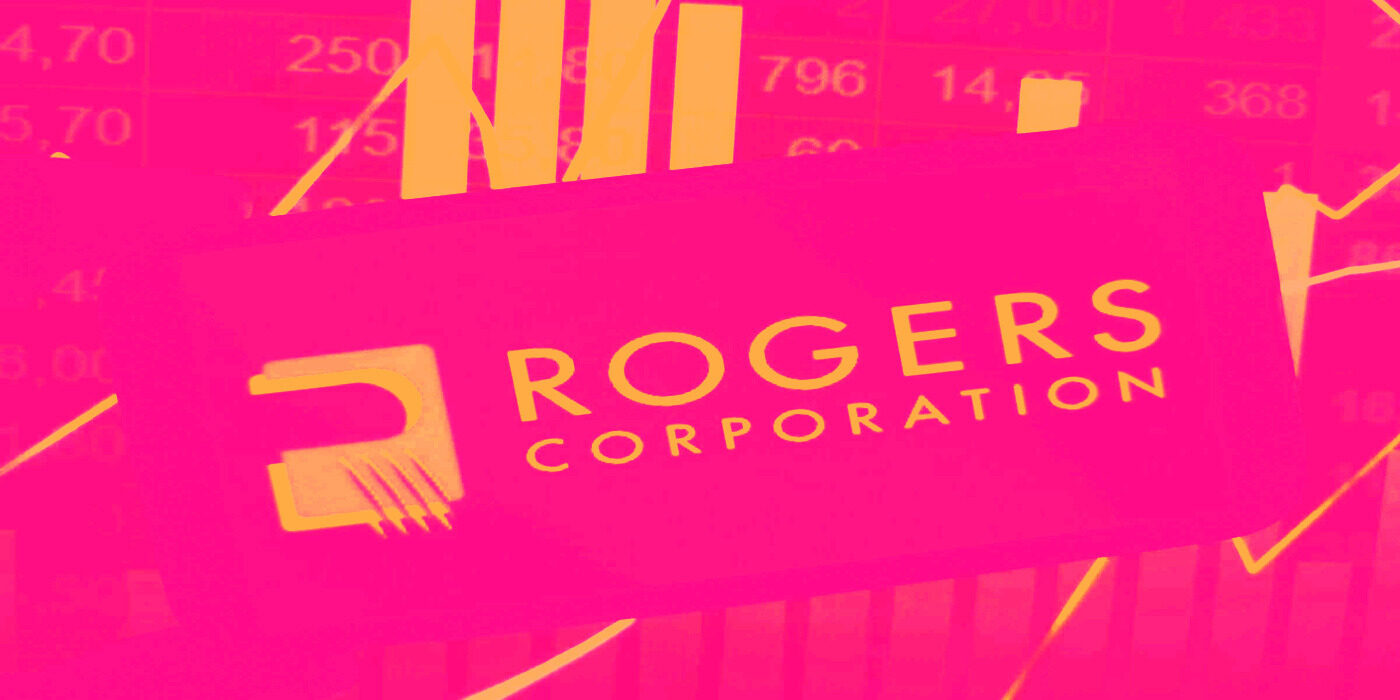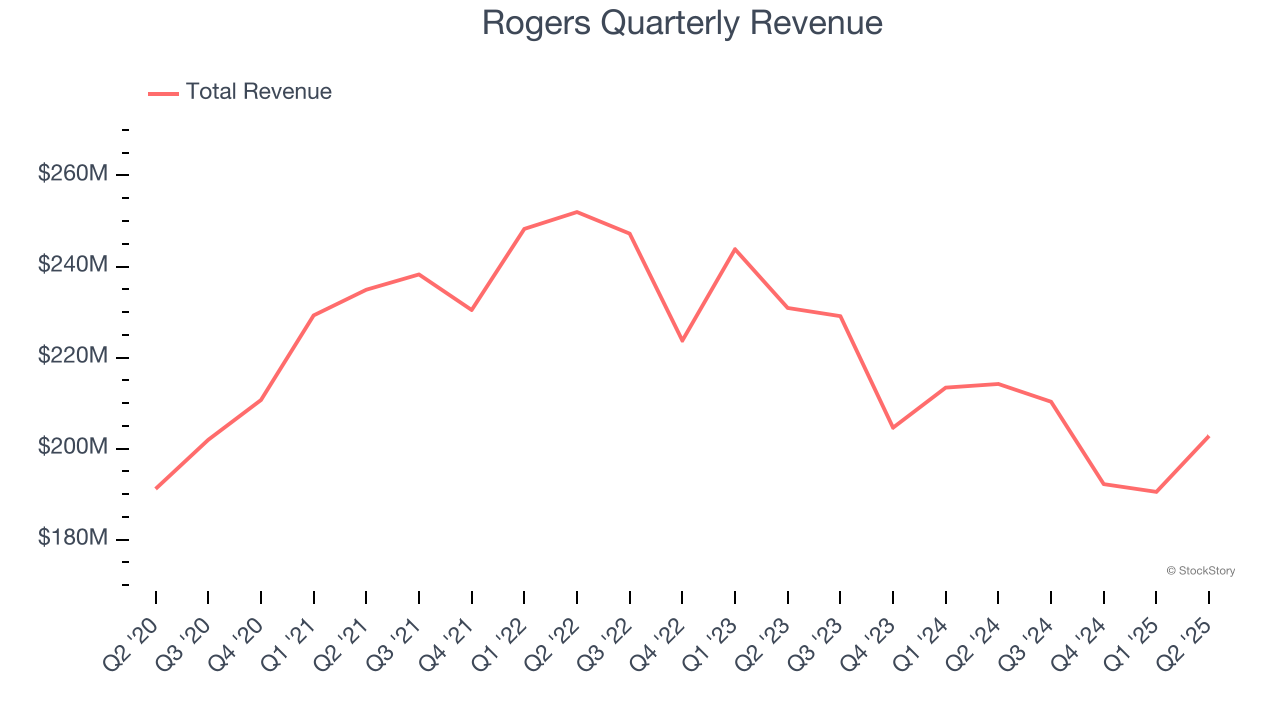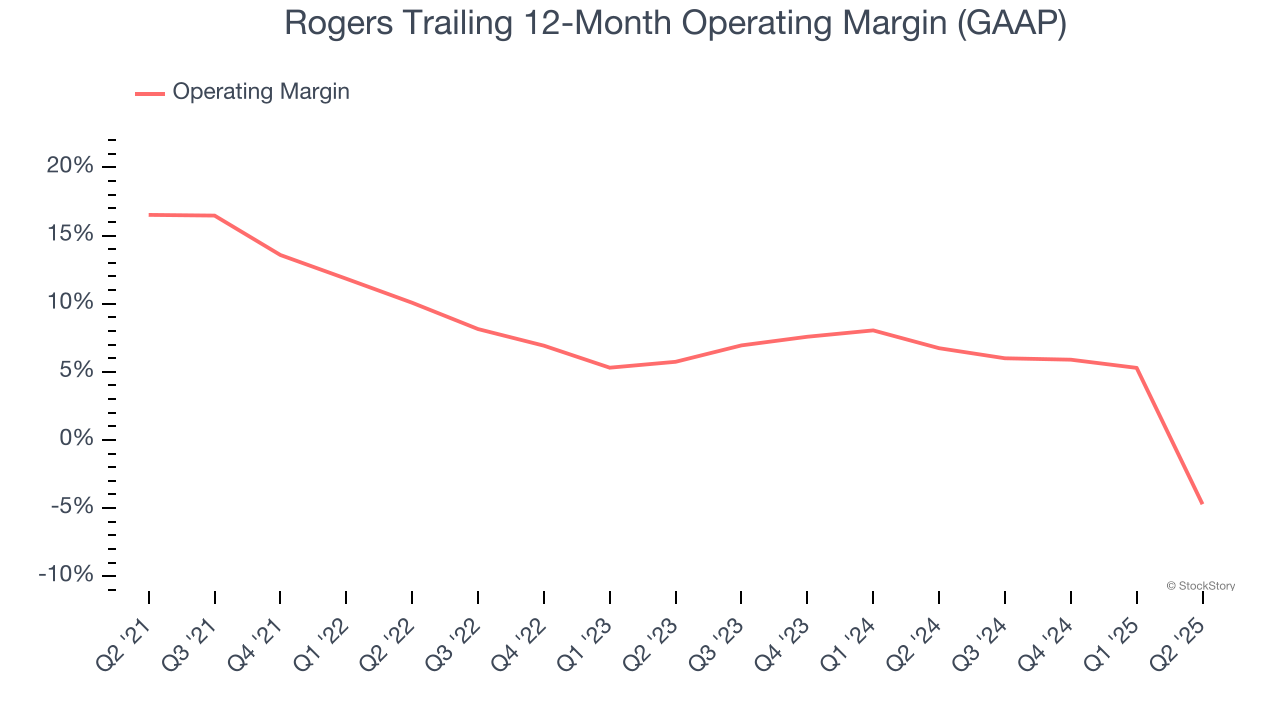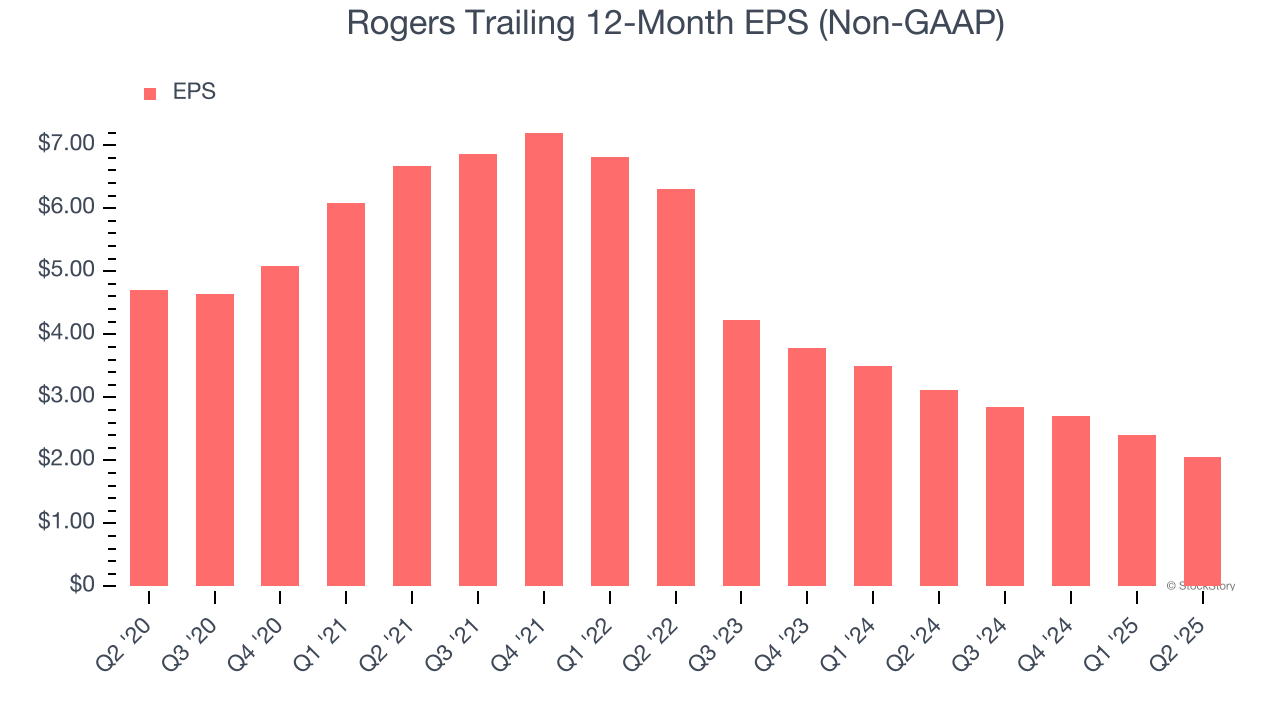
Engineered materials manufacturer Rogers (NYSE:ROG) reported Q2 CY2025 results topping the market’s revenue expectations, but sales fell by 5.3% year on year to $202.8 million. Guidance for next quarter’s revenue was better than expected at $207.5 million at the midpoint, 0.9% above analysts’ estimates. Its non-GAAP profit of $0.34 per share was 32% below analysts’ consensus estimates.
Is now the time to buy Rogers? Find out by accessing our full research report, it’s free.
Rogers (ROG) Q2 CY2025 Highlights:
- Revenue: $202.8 million vs analyst estimates of $198.8 million (5.3% year-on-year decline, 2% beat)
- Adjusted EPS: $0.34 vs analyst expectations of $0.50 (32% miss)
- Adjusted EBITDA: $23.9 million vs analyst estimates of $25 million (11.8% margin, 4.4% miss)
- Revenue Guidance for Q3 CY2025 is $207.5 million at the midpoint, above analyst estimates of $205.7 million
- Adjusted EPS guidance for Q3 CY2025 is $0.70 at the midpoint, below analyst estimates of $0.84
- Operating Margin: -33.3%, down from 5.9% in the same quarter last year
- Free Cash Flow Margin: 2.8%, down from 4.1% in the same quarter last year
- Market Capitalization: $1.23 billion
"As anticipated, second quarter sales increased sequentially due to incremental improvements across most end markets,” stated Ali El-Haj, Rogers' Interim President and CEO.
Company Overview
With roots dating back to 1832, making it one of America's oldest continuously operating companies, Rogers (NYSE:ROG) designs and manufactures specialized engineered materials and components used in electric vehicles, telecommunications, renewable energy, and other high-performance applications.
Revenue Growth
Examining a company’s long-term performance can provide clues about its quality. Any business can put up a good quarter or two, but the best consistently grow over the long haul.
With $795.8 million in revenue over the past 12 months, Rogers is a small player in the business services space, which sometimes brings disadvantages compared to larger competitors benefiting from economies of scale and numerous distribution channels.
As you can see below, Rogers struggled to increase demand as its $795.8 million of sales for the trailing 12 months was close to its revenue five years ago. This shows demand was soft, a rough starting point for our analysis.

We at StockStory place the most emphasis on long-term growth, but within business services, a half-decade historical view may miss recent innovations or disruptive industry trends. Rogers’s recent performance shows its demand remained suppressed as its revenue has declined by 8.3% annually over the last two years. 
This quarter, Rogers’s revenue fell by 5.3% year on year to $202.8 million but beat Wall Street’s estimates by 2%. Company management is currently guiding for a 1.3% year-on-year decline in sales next quarter.
Looking further ahead, sell-side analysts expect revenue to grow 2.4% over the next 12 months. Although this projection suggests its newer products and services will fuel better top-line performance, it is still below the sector average.
Software is eating the world and there is virtually no industry left that has been untouched by it. That drives increasing demand for tools helping software developers do their jobs, whether it be monitoring critical cloud infrastructure, integrating audio and video functionality, or ensuring smooth content streaming. Click here to access a free report on our 3 favorite stocks to play this generational megatrend.
Operating Margin
Operating margin is a key measure of profitability. Think of it as net income - the bottom line - excluding the impact of taxes and interest on debt, which are less connected to business fundamentals.
Rogers was profitable over the last five years but held back by its large cost base. Its average operating margin of 7.1% was weak for a business services business.
Looking at the trend in its profitability, Rogers’s operating margin decreased by 21.2 percentage points over the last five years. Rogers’s performance was poor no matter how you look at it - it shows that costs were rising and it couldn’t pass them onto its customers.

This quarter, Rogers generated an operating margin profit margin of negative 33.3%, down 39.2 percentage points year on year. This contraction shows it was less efficient because its expenses increased relative to its revenue.
Earnings Per Share
Revenue trends explain a company’s historical growth, but the long-term change in earnings per share (EPS) points to the profitability of that growth – for example, a company could inflate its sales through excessive spending on advertising and promotions.
Sadly for Rogers, its EPS declined by 15.3% annually over the last five years while its revenue was flat. This tells us the company struggled because its fixed cost base made it difficult to adjust to choppy demand.

Diving into the nuances of Rogers’s earnings can give us a better understanding of its performance. As we mentioned earlier, Rogers’s operating margin declined by 21.2 percentage points over the last five years. This was the most relevant factor (aside from the revenue impact) behind its lower earnings; interest expenses and taxes can also affect EPS but don’t tell us as much about a company’s fundamentals.
Like with revenue, we analyze EPS over a more recent period because it can provide insight into an emerging theme or development for the business.
For Rogers, its two-year annual EPS declines of 40.1% show it’s continued to underperform. These results were bad no matter how you slice the data.
In Q2, Rogers reported adjusted EPS at $0.34, down from $0.69 in the same quarter last year. This print missed analysts’ estimates. Over the next 12 months, Wall Street expects Rogers’s full-year EPS of $2.05 to grow 37.3%.
Key Takeaways from Rogers’s Q2 Results
It was encouraging to see Rogers beat analysts’ revenue expectations this quarter. We were also glad its revenue guidance for next quarter slightly exceeded Wall Street’s estimates. On the other hand, its EPS guidance for next quarter missed and its EPS fell short of Wall Street’s estimates. Overall, this was a weaker quarter. The stock traded down 2.7% to $63.80 immediately following the results.
Rogers underperformed this quarter, but does that create an opportunity to invest right now? The latest quarter does matter, but not nearly as much as longer-term fundamentals and valuation, when deciding if the stock is a buy. We cover that in our actionable full research report which you can read here, it’s free.
